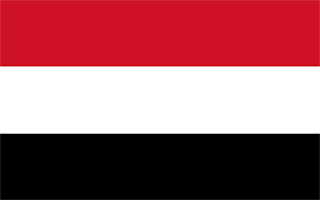Facts and Data
Webpages:
Official Unesco Page
View photos from OUR PLACE the World Heritage collection
Protectedplanet.net
Basis Data:
Unesco World heritage since: 2008
Size of heritage: 410,460 ha
- Buffer zone: 1,740,958 ha
Coordinates:
Longitude: 53,833°
Latitude: 12,500°
Summary
Socotra Archipelago, in the northwest Indian Ocean near the Gulf of Aden, is 250 km long and comprises four islands and two rocky islets which appear as a prolongation of the Horn of Africa. The site is of universal importance because of its biodiversity with rich and distinct flora and fauna: 37% of Socotra’s 825 plant species, 90% of its reptile species and 95% of its land snail species do not occur anywhere else in the world. The site also supports globally significant populations of land and sea birds (192 bird species, 44 of which breed on the islands while 85 are regular migrants), including a number of threatened species. The marine life of Socotra is also very diverse, with 253 species of reef-building corals, 730 species of coastal fish and 300 species of crab, lobster and shrimp.
Location on Map
Show bigger map on Openstreetmap
Introduction
The Socotra Archipelago is a UNESCO World Heritage site located in Yemen, specifically at coordinates N12 30 0 E53 49 60. This unique archipelago is renowned for its exceptional biodiversity and distinct natural landscapes. In this article, we will explore the history of this heritage site and its current state.
History
The Socotra Archipelago has a rich history that dates back thousands of years. It has been inhabited since prehistoric times, with evidence of human presence found in archaeological sites across the islands. The archipelago has been a strategic location for trade and cultural exchange, attracting various civilizations throughout history.
During the ancient period, Socotra was a crucial stopover for merchants traveling between the Arabian Peninsula, Africa, and the Indian subcontinent. It served as a trading hub for valuable commodities such as frankincense, myrrh, and spices. The archipelago was ruled by different empires, including the Persians, Greeks, Romans, and Arabs.
In the 16th century, Socotra came under the control of the Mahra Sultanate, which maintained its independence until the 19th century when it was annexed by the British Empire. The British established a presence on the islands and used Socotra as a strategic base during World War II.
Current State
The Socotra Archipelago is currently facing numerous challenges that threaten its unique ecosystems and cultural heritage. The ongoing conflict in Yemen has had a significant impact on the archipelago, leading to a decline in tourism and limited access to resources and conservation efforts.
Despite these challenges, the Socotra Archipelago remains a remarkable natural and cultural treasure. Its biodiversity is unparalleled, with a high number of endemic species found nowhere else on Earth. The archipelago is home to the iconic Dragon's Blood Tree, a symbol of Socotra's unique flora.
Efforts are being made to protect and preserve the Socotra Archipelago. UNESCO has recognized its outstanding universal value and designated it as a World Heritage site in 2008. This designation aims to raise awareness about the archipelago's importance and promote sustainable development and conservation.
Local and international organizations are working together to safeguard the archipelago's natural and cultural heritage. Conservation initiatives focus on preserving the unique ecosystems, promoting sustainable tourism, and supporting the local communities who depend on the archipelago's resources.
Despite the challenges, the Socotra Archipelago continues to captivate visitors with its breathtaking landscapes, diverse wildlife, and rich cultural heritage. It serves as a reminder of the importance of preserving our planet's natural wonders for future generations.
Conclusion
The Socotra Archipelago in Yemen is a UNESCO World Heritage site of exceptional value. Its history as a trading hub and its unique biodiversity make it a truly remarkable place. Despite the challenges it faces, efforts are being made to protect and preserve this natural and cultural treasure. The Socotra Archipelago serves as a reminder of the importance of conservation and sustainable development for the benefit of both present and future generations.
